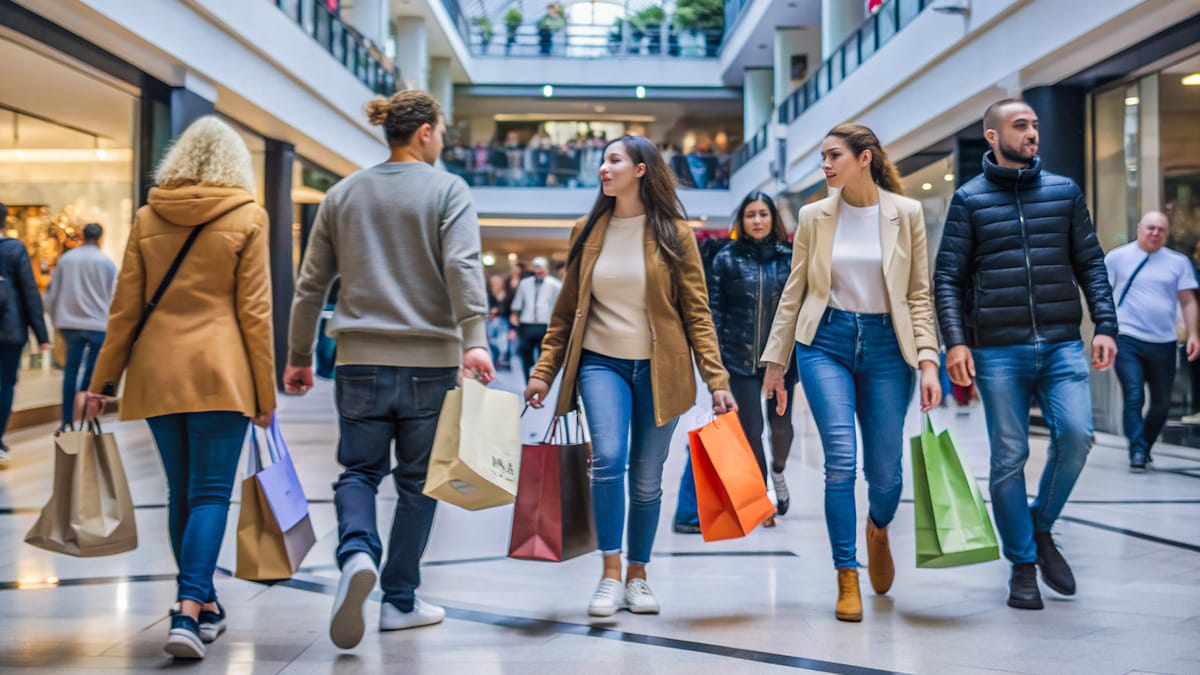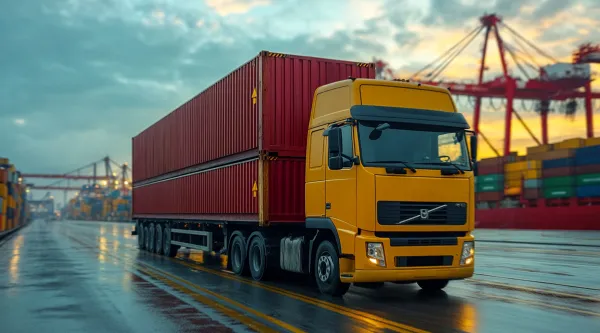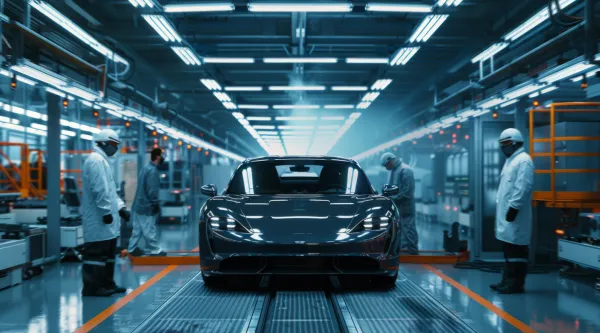How is Tech Leading the Path for CX in India Retail
Globally the market has a growth rate of 8.5% whereas in India the market is growing at a rate of 8.5% with an average gross profit margin of 10%.

With India ranking 5th globally in GDP, over the years the retail segment has contributed substantially. Globally the market has a growth rate of 8.5% whereas in India the market is growing at a rate of 8.5% with an average gross profit margin of 10%. The most popular categories in India’s retail are Food and Grocery, with a market split of 90.7% offline channels and 9.3% online having 280mn digital shoppers in 2024.

Technological Trends in Retail
75% of Indian shoppers show a preference for omnichannel brands: This gives shoppers a seamless and unified customer experience by integrating multiple shopping channels – online, in-store and mobile. Companies like DMart had a 32% YoY revenue growth post the online expansion, while Decathlon experienced a 10% growth in online customer base month-on-month post online expansion in 2019 where Bed, Bath & Beyond saw a 75% growth in online sales during the pandemic.
By 2025, 50% of the retail companies in India are expected to use AI in their operations: Indians are expected to use AI for multiple operations including providing a personalized customer experiences, inventory management, predictive analytics and improving supply chain efficiency. Walmart’s “Text-to-Shop” feature has been a big hit which lets customers add items and place orders via text with AI and ZARA had a $33mn hike in its profit margins after using AI in its product mix optimization strategy.
Indian Retail is utilizing technology like AR/VR and spatial computing to enrich customer experiences and add to economic growth: The rise of experimental retail focuses on creating a fascinating and interactive in-store experience to engage customers and differentiate brands. Azorte offers smart trial rooms, experiencing 3x revenue growth in the first quarter of 2023. Ikea has increased its online sales by 73% with the launch of IKEA place AR app.
$90mn new households to be led by millennials by 2025, drives retailers to prioritize sustainability: Greening the retail includes adopting eco-friendly practices and sustainable practices to reduce the impact caused to the environment while promoting environmental responsibility. The “Made in India” tag grows as customers choose and favor locally sourced, sustainable luxury. GANNI has employed innovative in-store materials and upcycle their unsold inventory.
Benchmarking On the Grounds of Customers and Retailers
Personalized Experiences can be location based, notifications, try-ons, virtual mirrors, chatboxes, smart trail rooms, voice assistance bots and humanoid bots: 85% customers have concerns regarding their privacy, sharing personal information but 90% of the customers feel that there is an overload of information due to personalization example overload of product recommendations.
40% of the retailers lack personalization on a advanced level capabilities due to high costs. 60% of the retailers have struggle to measure personalized solutions’ (ROIs) due to the lack of feature rich options.

Navigational Experiences are virtual, in-store, wayfinding kiosks and product scanning: 50% of the customers struggle to find products because of outdated inventory information on the digital signage but 70% of the retailers but 70% of the retailers feel that technology alienates customers who prefer to have personalized assistance as businesses need a mix of both.
Payment and Checkout can be scan-and-go, biometric payments, self-check-out kiosks and queue alert systems: 90% of customers get frustrated by long queues at checkout lines, especially during long hours. Technology illiteracy can be a barrier for old aged customers for using self-check out kiosks and 65% customers have this presumption.
30% of the retailers face challenges of accommodating the diverse preferences of the different customer segments whereas 50% of the retailers feel that there lies a high maintenance expenses or high upfront costs with these self-checkouts or kiosks.
Azorte Transforming Customer Shopping Experience
Reliance Retail launched a premium fashion and lifestyle store chain in 2022 across Mumbai, Pune, Hyderabad, Gurugram and Bangaluru. It wanted to tackle the challenge of long queues, searching the entire store for the right fit manually and limited payment options.
It launched discovery kiosks at each floor: With discovery kiosks at every level of the store, one can scan QRs, select sizes and receive the items at the nearest counters. Also, they have initiated the process of offering alternative styling suggestions making the shopping experience seamless.
Implemented Radio-Frequency Identification (RFID) Creating Smart-Trial Rooms: RFID detects product by simply scanning that QR displaying sizes on the LED screens displayed in the trial rooms. By this one can request size changes directly to the trial room with the staff bringing it to them. These smart mirrors also offer personalized style suggestions.
Scan, Pay, Go: Customers can now bypass the long queues at the billing counter by simply scanning the their products with their phones cameras, viewing details and completing the payment directly through the app. There are multiple checkout kiosks at every level making the process even simpler.
What Holds for the Future for CX Technology in India?
Customer Experience in the Retail Market will increase by a CAGR of 6.3% reaching INR110Cr: Retailers can use advanced data analytics to understand customer behavior and preferences, providing a tailored shopping experience, catering to individual needs. Omni-channels will give a cohesive shopping experience for a flexible purchase option and a consistent engagement across all platforms.
Growth in the personalized experience market will increase 10% by 2028: The personalization of AI-driven algorithms can analyze a huge amount of customer data in real time, offering tailored recommendations and promotions adding to customer satisfaction and loyalty. By this, retailers can also create vast and dynamic customer profiles evolving with each interaction, allowing for continuous improvement and driving growth.
Demand of products like virtual mirrors with increase 15% by 2028: Advancements in AR technology enabling customers to try on products virtually will increase more, providing a convenient, engaging shopping experience reducing return rates and increasing sales. Post-Covid, virtual mirrors and try-ons have become an essential part of the retail experience, adding to the growth.
IoTs in Indian Retail Market will increase to 16% by 2028: Creating a smart inventory management using IoTs devices will allow for real-time tracking and management, reducing costs attached to overstocking, stockout and improving the overall supply chain efficiency. This will also add to personalizing shopping experiences by targeting promotions, smart shelves and attractive displays leading to attracting and retaining more customers.
Implications and questions for Indian retailers to reflect on
Technology has the potential to improve the customer experience in the retail market. It is witnessing rapid GDP growth, contributing substantially to the growth of the retail segment. However, there lies numerous challenges in integrating customer experience with keeping the difficulties of retailers to adapt and change while continuously improving customer experience in mind.
Indian retailers scaling their businesses, trying to enhance the customer experience should focus on how can they manage the gap between integrating technologies like AI and IoT to drive sales and at the same time make customers comfortable using them?


